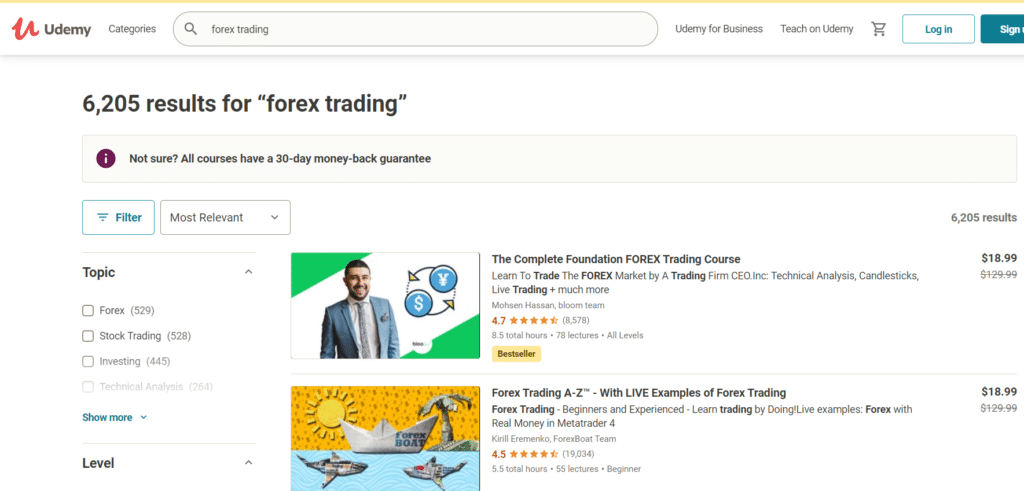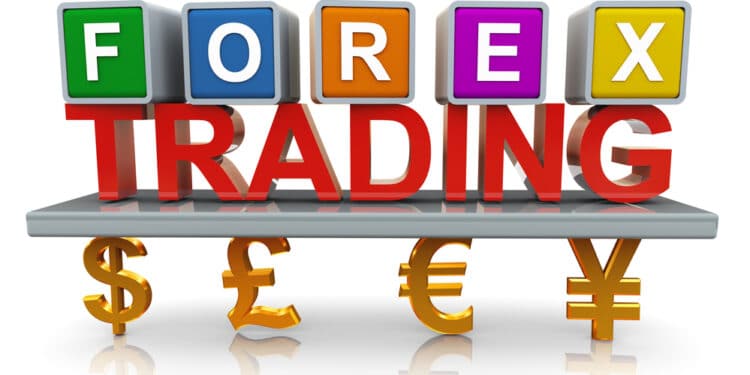A forex trading course refers to well-formatted content that is intended to help people become good forex traders. The course could be in the form of written content, video, audio format, or the three combined.
In this article, we will look at what you need to know about the best forex trading courses, how to avoid scams, and how to use them well.
What is a forex trading course?
For starters, forex trading refers to the automated process of buying and selling currencies. It works through a forex broker, who provides the platform to facilitate the trading. The practice is beloved by many people because of its huge profit potential.
Done well, many people are able to more than double their money within a few days. However, trading is also a risky business, where most participants lose money. In fact, it is well-known that more than 80% of all people who get into the industry fail.
Therefore, forex courses are a popular means for people to learn more about day trading since this trading is not taught in most universities and colleges.
Types of forex courses
There are several types of forex courses that you can use today.
Free vs. paid courses
Free courses are the most popular courses in the industry. Most of them are offered in the education section of most brokers. Some companies like BabyPips offer the courses for free as part of their business strategy.
On the other hand, paid courses are those you must pay to enroll. Some of the most popular paid courses are found in platforms like Udemy and Coursera.
Video vs. written courses
Based on their type, there are video courses hosted on popular platforms like YouTube and Vimeo, while others are mostly based on the material in a written format.
Online vs. one-to-one courses
Some companies have created certified online courses on forex and other assets, while with the others, the tutor will guide you from start to finish.
Contents of a good course
The forex industry is a relatively wide one. Like other industries, it is almost impossible to cover it adequately.
Below are some essential contents that all trading courses must have:
- Introduction – This section covers the idea of the industry and how it works.
- Analysis methods – The section looks at the popular analysis methods like technical, price action, and fundamental analysis.
- Risk management – This section covers concepts of risk management and how to manage your risk as a trader.
- Trading psychology – This is a section that will help you improve your mental status as a trader.
- Strategy development – Some course developers take a deep dive on how to develop a strategy from scratch.
- Robot development – This is a relatively advanced section that is not offered by most courses. It guides the traders on how to build robots that will help them automate their trading.
These sections are relatively large ones. Some courses focus on each of these sections. For example, you will find some courses that cover different techniques on technical analysis.
Free versus paid forex courses
A common question is on which is the best option to use between a free and paid online course. In all fairness, there is no accurate answer to the question. Many traders have moved from novices to professionals by using free courses. On the other hand, market participants failed when using free courses but found success when using a paid course.
Still, when possible, it is always a good thing to use both. For example, you can start the journey using a platform like BabyPips or DailyFx and then pay a professional who offers one-to-one courses.
However, based on my experience, I have seen people who have succeeded by using free materials like YouTube videos.
Forex training scams
Starting a forex trading training company is a relatively easy process. Indeed, all you need is to prepare some materials and build a good website. You can also use popular learning management platforms like Teachable and Thinkific to come up with courses. After this, you can spend some money to promote the course online and enroll students.
Therefore, because of substantially low barriers to entry, there are many scams on the internet. Some offer fully plagiarized materials, while others offer content that you can find for free online. As such, as an upcoming trader, you should be careful about the courses that you buy.
There are several steps you can take to avoid these scams. First, use a platform that gives you a free trial. Many companies offer the first chapter for free and then let the customer pay to access the rest of the material. This is a risk-free method in that you will only pay for a course that you like.
Second, use courses offered in popular learning platforms like Coursera and Udemy. The benefit of these platforms is that they have standards that ensure the quality of the courses they offer. Also, they have a rating system that is hard to manipulate.
For one, only paying customers can leave a rating in the system, meaning that a course developer cannot manipulate the system. For example, one can tell that the two courses shown below are good since they have thousands of students and a 4.7 and 4.5 star, respectively.
Udemy forex course example

Finally, if you are not using companies like Udacity, you should do a lot of research about the course provider that you are using. Read their reviews on platforms like BBB, Facebook, and TrustPilot. These reviews will help you see the past experience of the course provider.
Summary
A forex trading course is an ideal starting point for anyone who wants to succeed in the industry. Personally, I used BabyPips to get started in the industry. Over the years, I have used several other platforms to learn more about different concepts.
I have watched videos, talked to experts, watched webinars, and attended workshops. If you want to succeed, I suggest that you start taking a free course first.




